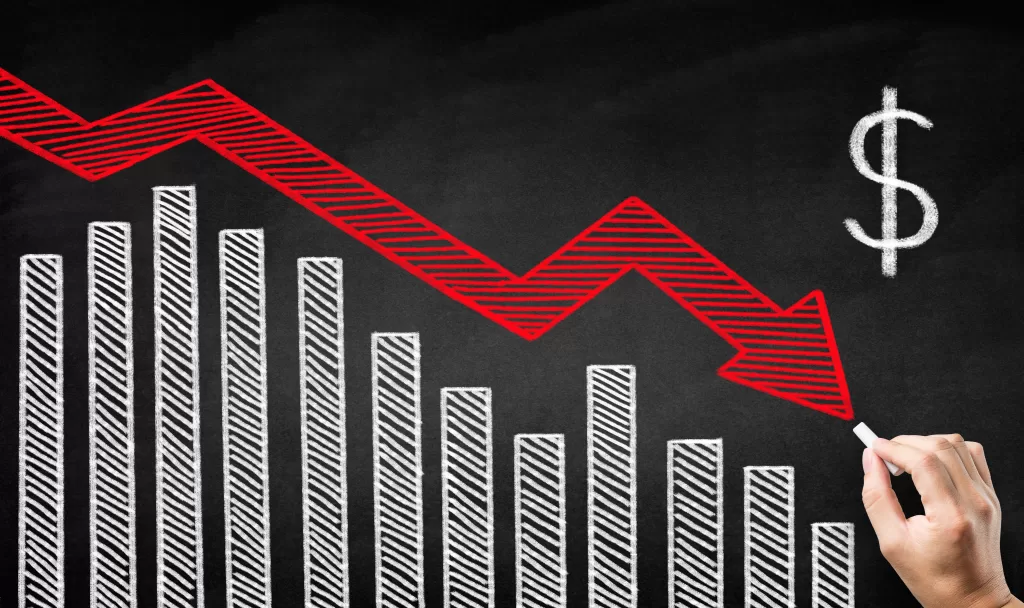The Causes of the Great Depression
The Great Depression, a devastating economic crisis that lasted from 1929 to 1939, is one of the most studied events in history. While the causes of the Great Depression are still debated, there are several theories as to why this period of prolonged hardship occurred.
One major factor to the Great Depression was the stock market crash of October 24th and 29th 1929. This came after a year of wild speculation on Wall Street that caused share prices to become drastically inflated. When the market fell apart, investors panicked and sold their stocks at an unprecedented rate. This caused further losses and setting off a chain reaction that eventually led to widespread economic despair. In addition, many experts point to factors like high tariffs on imported goods, falling wages for workers due to overproduction, and increasing debt among businesses as other causes for the Great Depression.

The Causes of the Great Depression
Causes of Economic Instability
The Great Depression of the 1930s was a period of unprecedented economic instability and hardship. It was a global phenomenon, with millions suffering from extreme poverty and unemployment. While there were many causes of the Great Depression, some factors stand out as major contributors to this period of financial ruin.
One cause is that stocks were overvalued prior to 1929, leading investors to make risky investments they could not sustain. This meant that when stock prices crashed in October 1929, it caused a cascade of bankruptcies throughout America’s financial sector. Additionally, banks began calling in loans due to their own precarious financial positions and lack of confidence among depositors. This led to further economic contraction and a decrease in consumer spending due to widespread panic about the state of the economy.
Finally, the Smoot-Hawley Tariff Act exacerbated economic troubles by raising taxes on imports significantly. As a result, other countries retaliated by placing tariffs on American exports. This further exacerbated the effects of the Great Depression. In all, these factors led to a collapse in total industrial output and GDP as well as an increase in unemployment.
Stock Market Crash
The Stock Market Crash of 1929 is one of the most infamous events in history. It marked the start of The Great Depression. But what were the causes behind it?
Many economists point to rapid speculation and overproduction in the 1920s as major contributors to the stock market crash. Speculation in stocks was rampant during this decade. With people buying into stocks simply expecting to resell them at a higher price rather than invest in a company’s potential. This unchecked activity caused prices to rise quickly and dramatically. Ultimately leading to an unsustainable bubble. Combined with overproduction, which flooded markets with more goods than consumers could afford, this created a situation where investors had little confidence that their money was safe.
When these factors all came together, it set off a chain reaction. This caused an unprecedented economic collapse that had reverberations for years afterwards.
The Causes of the Great Depression for Bank Failures
The Great Depression was one of the darkest eras in American history. One of its key causes, without a doubt, was the wave of bank failures that swept through the country. The decade began with over 30,000 banks operating in America. Due to high levels of risky investments and speculation, by 1933 nearly 10,000 had failed.
Eager to make money fast, some banks gave out far too many loans without assessing borrowers’ ability to repay them. This a practice that made it difficult for their own finances to remain stable. As more and more customers defaulted on their loans, banks were left struggling to keep up with demand for cash withdrawals. This created a domino effect leading many other financial institutions into insolvency as well.
Global Factors
The Great Depression was a disaster that affected many countries around the world in the 1930s. It marked a period of widespread poverty and hardship. This was caused by a combination of different factors including global instability, unemployment, and overproduction.
It is widely accepted that the stock market crash of 1929 was one of The Causes of the Great Depression. This event triggered financial panic and large-scale bank failures across North America and Europe. Additionally, it created higher levels of unemployment since individuals had less money to spend.
This crisis was further exacerbated by other global factors. Excessive speculation in the stock market, agricultural overproduction, deflationary monetary policies put in place by governments at the time are just a few. These things led to international trade wars which led to extreme protectionism among countries. Political unrest led to tariffs on goods brought in from other nations.
Inequality of Wealth
The unequal distribution of wealth had been building for decades before the crash. This led to excessive speculation and borrowing on loans with little collateral. This created an unstable market that eventually led to a major financial crisis when some banks failed as a result. On top of this, huge disparities between rich and poor meant that those with less resources weren’t able to access credit or other forms of liquidity when they needed it most during the depression. This was just one of the causes of the Great Depression.
Impact on Everyday Life
As people tried to make ends meet, consumption decreased dramatically which had far-reaching consequences on those who relied heavily on consumer spending such as farmers and small businesses. In many cases, farmers were unable to sell their produce and small businesses went bankrupt as people didn’t have the money to buy things. There was also a rise in unemployment as the economy began to slow down and factories that relied on consumers for sales couldn’t afford to keep all of their employees.
Another direct impact on everyday life was that people began to hoard goods as they feared that there would be a shortage in the future. This caused an artificial shortage as prices rose and supplies were short.
Final Thoughts on The Causes of the Great Depression
The Great Depression was a time of great despair and suffering in the United States. It lasted from 1929 to 1939 and had far-reaching implications that affected everyday life for millions of Americans. What caused this economic catastrophe?
One of the primary the causes of the great depression was the stock market crash of 1929. Prior to this event, stocks were heavily overvalued, meaning that their prices weren’t proportional to their actual value. When people realized this and began selling off their shares, panic ensued, leading to a rapid decline in stock prices and business activity. This translated into massive losses for investors as well as banks who had lent money on those investments – leading them to close or declare bankruptcy.






